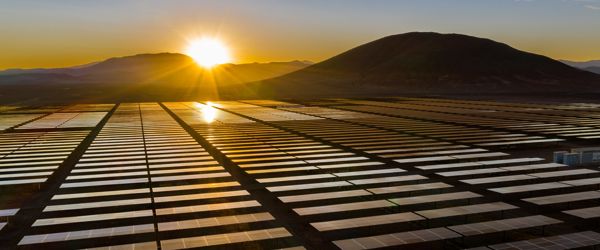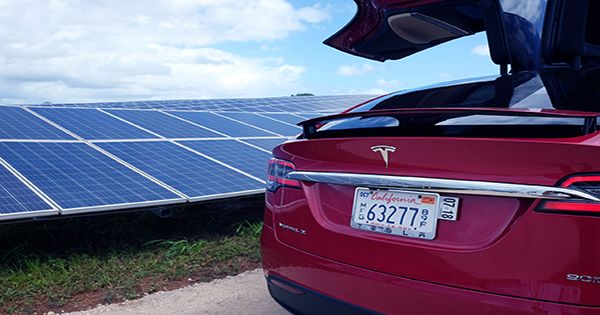Researchers recently devised a novel method for capturing the unused solar energy that illuminates a solar panel. They created special holograms that can be easily inserted into the solar panel package. This method can increase the amount of solar energy converted by a solar panel by about 5% over the course of a year.
The amount of energy available from sunlight is 10,000 times greater than what is required to meet the world’s energy demands. Sunlight has two primary properties that can be used to design renewable energy systems. The first is the amount of energy that falls on a fixed area, such as the ground or a person’s roof. This amount varies depending on the time of day and the season. The colors or spectrum of sunlight are the second property.
Scientists from the University of Arizona created a holographic light collector which they claim is able to increase the efficiency of solar panels by up to 4.5%.
Solar cells, which directly convert sunlight into electricity, are one method of capturing solar energy. Many cells are assembled on a rigid panel, connected to one another, sealed, and covered with protective glass in a solar module like those that people install on their roofs. When certain colors of sunlight fall on it and the entire area are covered by photocells, the solar cell performs best. However, some panel area is required to connect the cells, and the shape of the solar cell may prevent all of the remaining panel areas from collecting sunlight. Because of these effects, the solar panel is less efficient than it could be. Capturing as much of the sunlight on a solar panel as possible is critical to efficiently harnessing solar energy.
Researchers at the University of Arizona recently devised a novel method for capturing the unused solar energy that illuminates a solar panel. They developed special holograms that can be easily inserted into the solar panel package, as reported in the Journal of Photonics for Energy (JPE). Each hologram separates the colors of sunlight and directs them to the solar cells contained within the solar panel. This method can increase the amount of solar energy converted by the solar panel by about 5% over the course of a year. This reduces the cost as well as the number of solar panels required to power a home, city, or country.
The research was funded by the QESST Engineering Research Center, which is funded by the US National Science Foundation and the US Department of Energy to address the challenge of transforming electricity generation to meet growing energy demands in a sustainable manner.

The optical element in the proposed system is symmetrically placed at the center of the solar panel to increase the length of the effective light collection region. Each hologram is said to be capable of separating the colors of sunlight and directing them to the solar cells contained within the panel.
Low cost, sustainable design
The holographic light collector, designed by Ph.D. student Jianbo Zhao under the supervision of Raymond K. Kostuk, professor of electrical and computer engineering and optical sciences, and in collaboration with fellow Ph.D. student Benjamin Chrysler, combines a low-cost holographic optical element with a diffuser. To achieve maximum effective light collection, the optical element is symmetrically positioned at the center of the photovoltaic module.
The team calculated the annual energy yield improvement for Tucson, Arizona, and presented a reproducible method for evaluating the holographic light collector’s power collection efficiency as a function of sun angles at different times of day, seasons, and geographical locations.
According to JPE Editor-in-Chief, Sean Shaheen of the University of Colorado Boulder, the collector and associated method are particularly noteworthy because they are low-cost, scalable, and impactful: “The enhancement of approximately 5% in annual solar energy yield enabled by this technique could have a large impact when scaled to even a small fraction of the 100s of gigatonnes of ph.” Professor Kostuk’s team demonstrated their holographic approach using a low-cost gelatin-based material that can be mass-produced in large quantities. And while gelatin is normally derived from animal collagen, progress in lab-derived versions has made it likely that synthetic alternatives could be used at scale.”
Zhao and his co-authors are encouraged by the findings of their study and look forward to future work to improve the energy yield of holographic light collectors through experimental material evaluation.
















